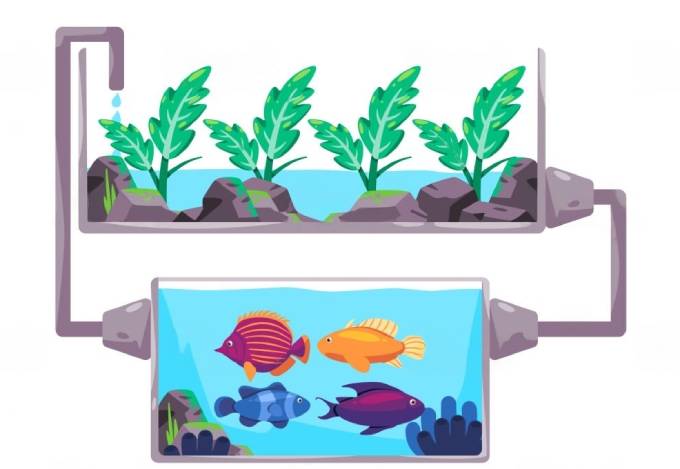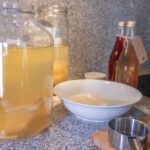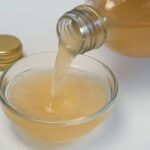Introduction
Harnessing the power of aquaponics is both an art and a science, allowing for sustainable and efficient food production. The heart of this unique ecosystem lies in achieving the ideal fish to plant ratio—a crucial balance that ensures healthy growth for all budding aquaponic enthusiasts.
In this blog post, we’ll dive deep into understanding the fundamentals behind aquaponics fish and plant ratio, explore its implications on overall system performance, and offer recommendations for optimal success.
Key Takeaways
- The fish to plant ratio is crucial for the success of any aquaponics system, as it ensures optimal nutrient exchange between fish waste and plant uptake.
- The ideal ratio can be influenced by several factors such as fish species, plant nutrient requirements, grow bed size, and water quality.
- Calculating water volume, selecting appropriate species based on growth rates and waste output, monitoring water quality regularly and adjusting feeding rates as needed are essential steps in determining the ideal ratio tailored for your specific setup.
- Successful examples of ratios used in various aquaponics systems include 1:2 for home setups with tilapia and lettuce to 1:6 for hybrid systems with koi and cucumbers.
Understanding Aquaponics Fish and Plant Ratio
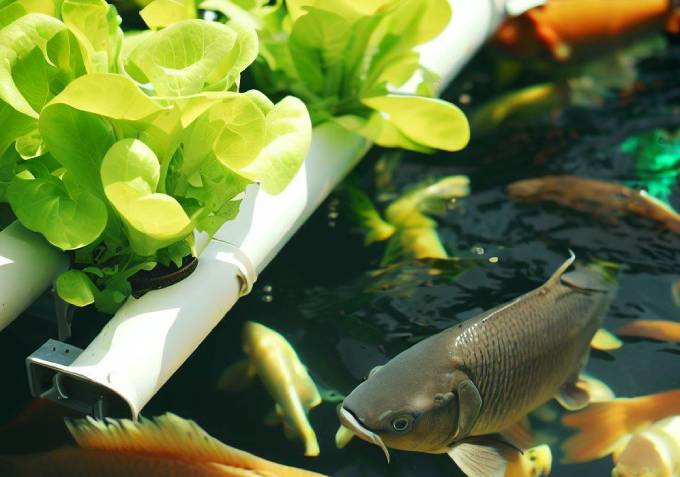
Aquaponics is a closed system that relies on the balance between fish waste and plant nutrient uptake, making the fish to plant ratio critical for success.
Explanation Of Aquaponics System
Aquaponics is an innovative and sustainable method of food production that combines two complementary systems: aquaculture (raising fish) and hydroponics (growing plants without soil).
In this closed-loop system, nutrient-rich water from the fish tank is pumped to the plant roots, nourishing them with essential nutrients. The plants then absorb these nutrients, thereby purifying the water before it’s returned back to the fish tank.
At its core, an aquaponics system consists of three main components: a fish tank where various species like tilapia, catfish or trout are raised; a grow bed filled with inert media such as expanded clay pellets or coconut coir where plant roots take hold; and a biofilter housing beneficial bacteria to break down harmful ammonia released by fish waste into useful nitrates for plants.
One real-world example showcasing successful implementation of an aquaponics setup includes Ouroboros Farms in Pescadero, California. Here, farmers have created thriving ecosystems bustling with tomatoes, strawberries, lettuce varieties alongside healthy catfish populations – all sustained within one integrated loop.
Importance Of The Ratio
Maintaining the proper fish to plant ratio is crucial for the success of any aquaponics system. Striking the right balance ensures that plants receive an adequate supply of nutrients while preventing overstocking in the fish tank, which could lead to poor water quality and stressed or diseased fish.
Achieving this delicate equilibrium can seem like a daunting task; however, understanding its importance makes it worth investing time and effort into finding the ideal ratio tailored for your specific setup.
For instance, if there are too few fish relative to plants in an aquaponics system, plant growth may suffer due to insufficient nutrients. Conversely, if you have more fish than necessary for your aquatic environment’s capacity, excessive waste accumulation could harm both your finned friends and greenery alike.
Factors Affecting The Ratio
The fish to plant ratio in an aquaponics system can be influenced by several factors, which play a crucial role in determining the optimal balance for healthy plant growth and fish culture. These factors include:
- Fish species: Different fish species produce varying amounts of waste and nutrients, ultimately affecting the fish to plant ratio. Some popular aquaponic fish include tilapia, catfish, and trout.
- Plant nutrient uptake: Aquaponic plants have different levels of nutrient requirements, so understanding the specific nutrient needs of your chosen plants will help optimize the fish to plant ratio.
- Fish feed: The quality and quantity of food given to the fish can impact nutrient production in an aquaponics system, making it essential to choose high-quality feed with proper nutritional content that supports both fish growth and plant health.
- Growbed size: The dimensions of your grow bed determine both water volume and space for plants. A larger growbed can accommodate more plants while maintaining a healthy environment for fish.
- Plant density: The number of plants per square meter or foot in a grow bed is another variable influencing the ideal ratio. Higher densities require more nutrients from fish waste.
- Aquaponics design: Different designs with unique configurations, such as Deep Water Culture (DWC), Nutrient Film Technique (NFT), or raft hydroponic systems may necessitate adjustments to the overall fish to plant ratio.
- Water quality: Maintaining proper pH levels, temperature control, oxygenation, and filtration all contribute to ensuring an optimal rate at which nutrients can be delivered from the aquatic environment to support thriving crops.
Determining The Ideal Fish To Plant Ratio
To determine the ideal fish to plant ratio in aquaponics, it is important to calculate the water volume, select appropriate fish and plant species based on nutrient uptake and growth rates, follow guidelines for beginners, and refer to examples of ratios that have been successful.
Calculating Water Volume
To determine the ideal fish to plant ratio in aquaponics, calculating the water volume is an important step. Follow these simple steps to calculate the water volume:
- Measure the length, width, and depth of your fish tank.
- Multiply the three measurements to get the total volume in cubic feet.
- Convert the cubic feet measurement to gallons by multiplying by 7.5.
- Measure the length, width, and depth of your grow bed.
- Multiply the three measurements to get the total volume in cubic feet.
- Convert the cubic feet measurement to gallons by multiplying by 7.5.
It is generally recommended that for optimal results, the fish tank volume should be equal to or slightly less than the grow bed volume in an aquaponics system. By following these calculations, you can determine whether adjustments need to be made to achieve this balance and maintain a healthy environment for both your fish and plants.
Selecting Fish And Plant Species
Selecting the right fish and plant species is crucial in achieving the ideal fish to plant ratio in aquaponics. When choosing fish, it’s important to consider their overall size, growth rate, and feeding habits.
Tilapia is a popular choice for aquaponic systems because they are hardy, fast-growing, and can tolerate varying water conditions.
For plants in an aquaponics system, leafy greens such as lettuce and herbs like basil are excellent choices because they absorb nutrients quickly from the water while providing plenty of oxygen for the fish.
Fruit-bearing plants including tomatoes or peppers also thrive well with adequate nutrient supply.
It’s essential to keep these factors in mind when selecting fish and plant species to achieve effective growth rates without compromising either side of your Aquaponic equation – happy healthy fishes and thriving crops yields!
Guidelines For Beginners
If you’re new to aquaponics, determining the ideal fish to plant ratio can be overwhelming. Here are some guidelines to help you get started:
- Start with a 1:1 or 2:1 ratio (growing bed to fish tank volume) and adjust as needed.
- Calculate the water volume in your system and choose fish species based on their size and waste output.
- Choose plant species based on their nutrient uptake and compatibility with your chosen fish.
- Monitor water quality regularly and adjust feeding rates accordingly.
- Aim for a feeding rate of about 100 grams of fish food per square meter of plant life.
- Gradually increase the number of fish in your system as your plants grow and nutrient production increases.
- Use filtration systems such as growbeds, raft hydroponic systems, or nutrient film techniques to maintain proper nutrient levels and remove excess waste.
By following these guidelines, you can ensure a healthy balance between your fish and plants while maximizing the efficiency of your aquaponics system.
Examples Of Ratios
Different aquaponic systems and setups may have varying fish to plant ratios depending on factors such as the species of fish and plants, as well as the size and volume of the system. To help you understand the variations, here are some examples of fish to plant ratios used in aquaponics systems:
| System Type | Fish Species | Plant Species | Fish to Plant Ratio |
|---|---|---|---|
| Home Aquaponics System | Tilapia | Lettuce | 1:2 |
| Commercial Aquaponics System | Tilapia | Tomatoes | 1:3 |
| Small-scale Aquaponics System | Goldfish | Herbs (e.g., basil, parsley) | 1:4 |
| Experimental Aquaponics System | Catfish | Peppers | 1:5 |
| Hybrid Aquaponics System | Koi | Cucumbers | 1:6 |
Keep in mind that these ratios are rough estimates and can be adjusted according to the specific needs and requirements of your aquaponics system. Monitoring and maintaining the proper fish to plant ratio ensures optimal growth for both fish and plants, as well as a balanced and healthy ecosystem.
Maintaining The Proper Fish To Plant Ratio
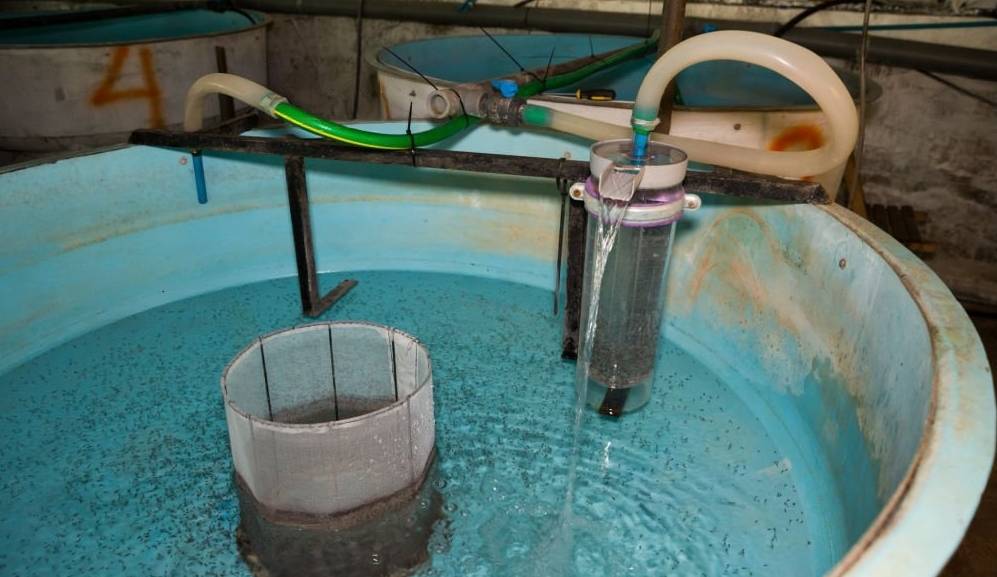
To ensure optimal plant growth and healthier fish, it’s crucial to maintain the proper fish to plant ratio by utilizing various aquaponics methods like DWC, growbeds, raft hydroponic system, NFT while monitoring water quality; learn more about these effective techniques in this comprehensive guide.
Deep Water Culture (DWC)
Deep Water Culture (DWC) is a popular aquaponics growing method that involves suspending plants in water. This system takes advantage of nutrient production by the fish culture in an aquaponic setup.
In DWC, 60-100 grams of feed per day per square meter of growing area is required to maintain optimal plant growth. The whole system can be easily adjusted to maintain a proper fish-to-plant ratio and avoid nutrient build-up that could harm either plant or fish health.
Growbeds
Growbeds are a popular option for aquaponics enthusiasts due to their efficiency in nutrient production. These beds are filled with a growing medium, such as expanded clay pellets or gravel, which provide support for the aquaponic plants while also serving as a biofilter.
The plants absorb nutrients from the water that has passed through the fish tank and grown stale.
The use of growbeds has been shown to improve plant growth and yield while reducing the need for artificial fertilizers. They offer an alternative to traditional hydroponic systems by providing natural filtration from fish waste and fostering symbiotic relationships between aquatic life and plants alike.
Raft Hydroponic System
A raft hydroponic system, also known as a floating raft aquaponics system, is one of the most popular methods used to grow plants in an aquaponics setup.
In this system, plants are placed on top of a floating platform made from polystyrene foam that sits atop the fish tank.
One significant advantage of this method is that it allows for excellent nutrient uptake by plants because they are submerged in nutrient-rich water at all times.
This results in faster growth rates and higher crop yields compared to traditional soil-based farming. Additionally, because rafts can be easily moved out of the way when needed, they offer greater flexibility than other hydroponic systems like DWC or NFT.
Nutrient Film Technique (NFT)
One of the methods used to grow plants in aquaponics is Nutrient Film Technique (NFT). In this method, a thin film of nutrient solution flows over the roots of the plants as they are suspended on a trough or channel.
This technique allows for maximum water and nutrient uptake by the plants while minimizing waste. NFT systems provide flexibility in plant spacing and allow for increased yield per square foot of grow space.
By optimizing fish-to-plant ratios through NFT systems, aquaponic farmers can achieve sustainable production with higher yields and healthier fish.
Monitoring Water Quality And Filtration
Maintaining proper water quality is essential in ensuring the health of both fish and plants in an aquaponics system. Here are some key factors to monitor:
- pH levels: A stable pH level between 6.8 and 7.2 is ideal for most aquaponic plants and fish species.
- Ammonia levels: High ammonia levels can be toxic to fish, so regular monitoring is crucial. Aim for levels below 1 ppm.
- Nitrate levels: Nitrates are a valuable nutrient source for plants, but too much can harm fish. Keep levels between 40 and 80 ppm.
- Dissolved oxygen: Fish require oxygen-rich water to survive, so make sure dissolved oxygen levels stay above 4 mg/L.
- Water temperature: Different fish and plant species have different temperature requirements, so monitor the water temperature carefully.
In addition to monitoring these key factors, proper filtration is also essential in maintaining water quality. Mechanical filtration removes solid waste from the water while biological filtration converts harmful compounds into less toxic forms. A combination of both mechanical and biological filtration techniques ensures optimal water quality for your aquaponic system.
Benefits Of Maintaining The Proper Ratio

Maintaining the proper fish to plant ratio in aquaponics results in improved plant growth and yield, healthier fish, better water quality, and sustainable and cost-effective production.
Improved Plant Growth And Yield
Maintaining the proper fish to plant ratio is essential for improving plant growth and yield in aquaponics systems. The nutrient-rich water produced by the fish tank provides the necessary nutrients for hydroponic crops, resulting in faster growth and higher yields compared to traditional soil-based methods.
With proper monitoring of water quality and filtration, aquaponics systems can produce consistently high-quality crops year-round. Plus, since these systems are self-contained and use natural processes to cycle nutrients, they are extremely sustainable and cost-effective compared to conventional farming practices.
Healthier Fish
Maintaining the proper fish to plant ratio in your aquaponics system does not only benefit the plants, but it also helps keep your fish healthier. When the correct balance is achieved, there will be enough nutrients and oxygen for both the plants and fish.
Additionally, by monitoring water quality and filtration systems for nitrate build-up or other imbalances in nutrient levels (which can harm fish health), you can ensure that your aquatic friends are living in a clean environment.
Better Water Quality
Maintaining the proper fish to plant ratio in aquaponics systems can lead to better water quality. The plants in these ecosystems play a crucial role in purifying and aerating the water, which is essential for the health of the fish.
When there are too many fish and not enough plants, waste products can accumulate quickly, leading to poor water quality and stressed out fish.
By maintaining a balanced ratio between the number of fish and plants, we promote nutrient uptake by both organisms while preventing any potential build-up of harmful chemicals or pollutants.
This not only leads to healthier conditions for our aquatic friends but also results in higher quality crops with greater yields.
Sustainable And Cost-effective Production
Maintaining the proper fish to plant ratio in an aquaponics system is not only beneficial for crop growth, but also for sustainable and cost-effective production. The use of natural fertilizers from fish waste eliminates the need for chemical fertilizers and reduces costs associated with purchasing these inputs.
One example of how maintaining the right ratio can lead to sustainable and cost-effective production is through the cultivation of tilapia and lettuce. Tilapia’s fast growth rate and nutrient-rich waste make them ideal fish species for an aquaponics system.
When combined with lettuce plants that have high nutrient uptake rates, farmers can increase their profit margins while reducing environmental impact.
Conclusion
In conclusion, the fish to plant ratio is a critical aspect of aquaponics that affects both the health of your fish and the growth of your plants.
Determining and maintaining the proper ratio requires careful consideration of water volume, selecting appropriate species, and monitoring water quality.
By following guidelines for beginners and implementing different systems like DWC, grow beds or Raft Hydroponic System you can achieve optimum results. The benefits are numerous – better plant growth, healthier fish, sustainable production, among others.
FAQs:
1. What is the ideal fish to plant ratio for aquaponics?
The ideal fish to plant ratio for aquaponics depends on a variety of factors, including the size and type of your system, the types of plants you are growing, and the species and size of fish in your tank. As a general rule, a safe starting point is one pound of fish per ten gallons of water.
2. Can I have too many fish in my aquaponics system?
Yes, having too many fish can be detrimental to your aquaponic system as it can result in overfeeding and excess waste that can cause an imbalance in nutrients within the water. This can lead to issues with algae growth or nutrient deficiencies for your plants.
3. How do I know if I need to adjust my fish-to-plant ratio?
You may need to adjust your fish-to-plant ratio if you notice changes in the health or growth rate of either your plants or fish. For example, if you observe excessive algae growth or poor plant growth despite regular feeding and maintenance, it may indicate that there are too many nutrients present due to an imbalanced ratio.
4. Can different types of plants require different ratios than others?
Different types of plants have varying nutrient requirements; thus they will perform better with differing ratios compared with other varieties based on their individual needs. It’s important when planning out an aquaponic garden setup plan which crops will be grown together so that each crop receives enough nutrition according its unique nutritional needs while still maintaining balance through proper ratios design dependent upon expected output from each section (i.e., how much product being harvested).

As a dedicated mother and passionate software developer, she weaves her diverse experiences into captivating stories that inspire and engage readers. Emma's love for sustainable living and environmental consciousness permeates both her personal and professional life. When she's not immersed in the world of coding and software development, Emma can be found nurturing her family and tending to her thriving organic garden. Her commitment to sustainable practices extends to every aspect of her life, from repurposing household items to embracing eco-friendly technologies.

